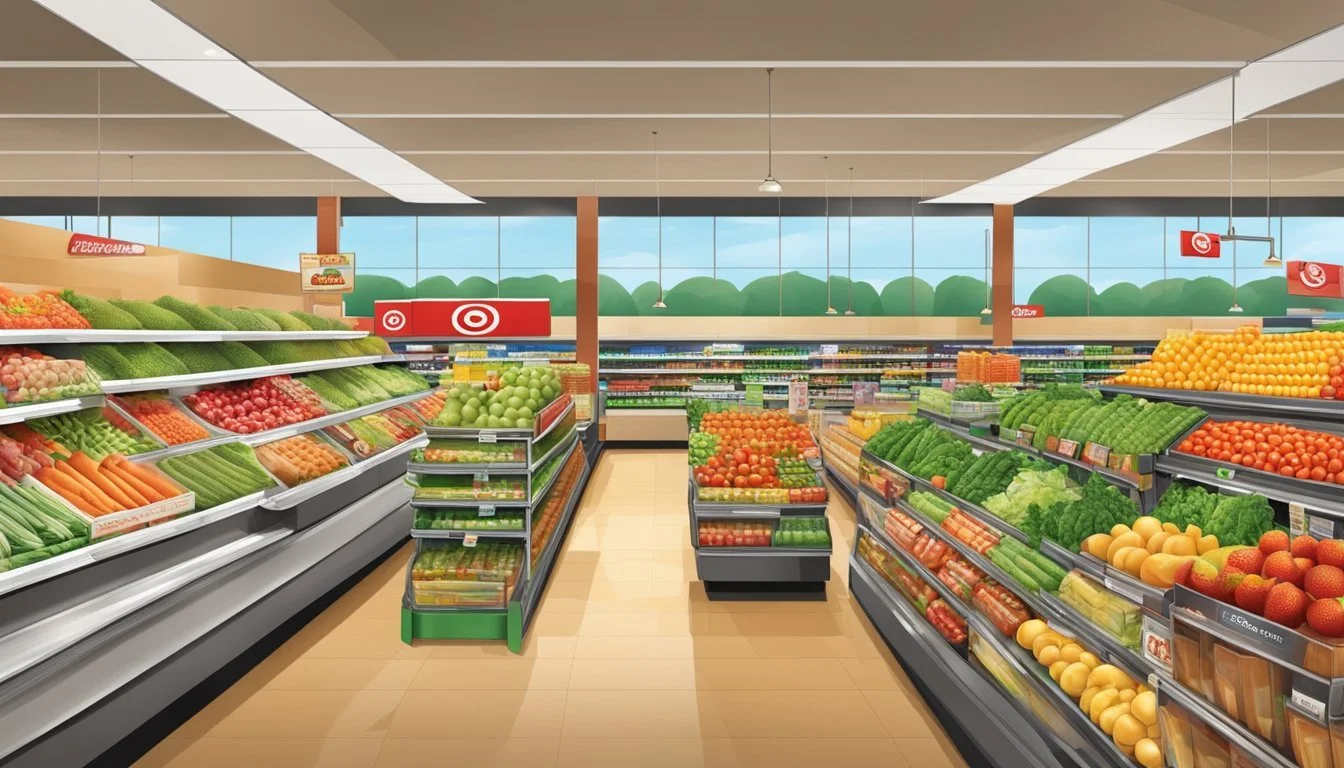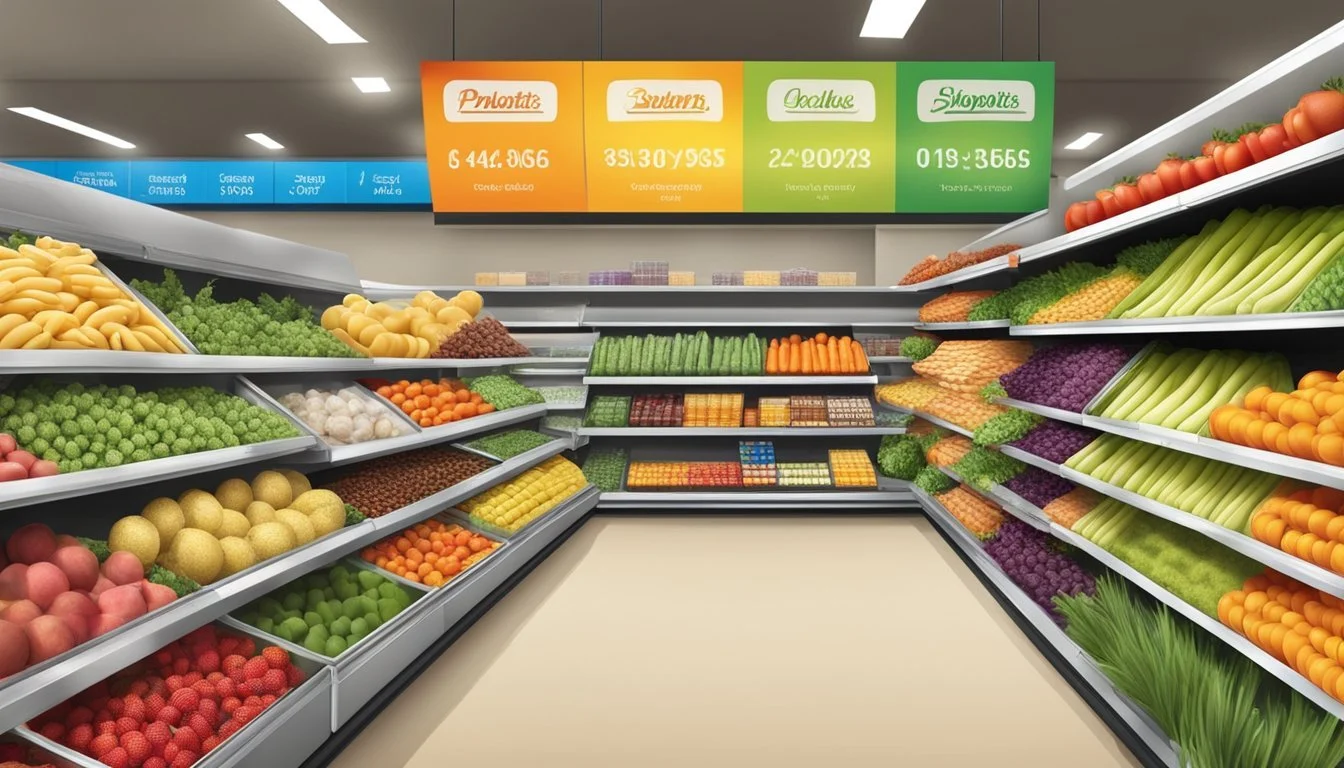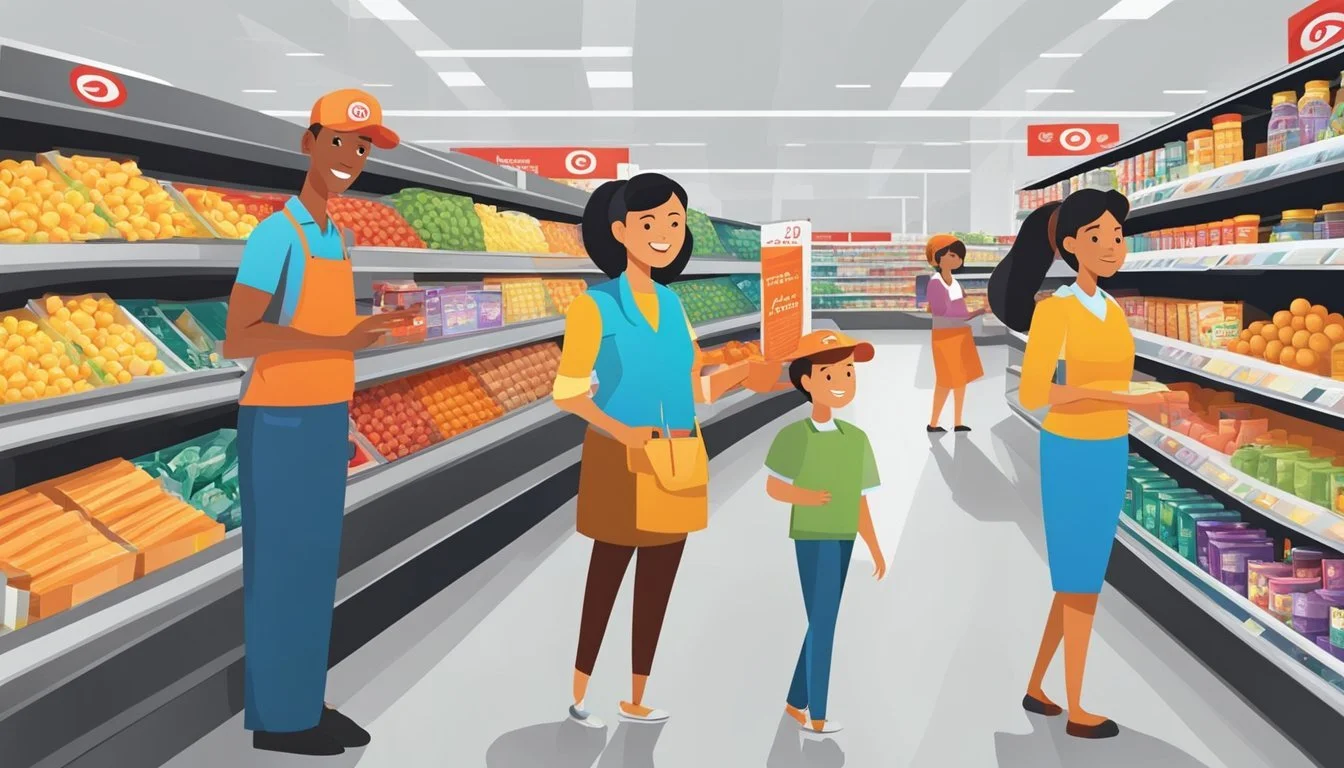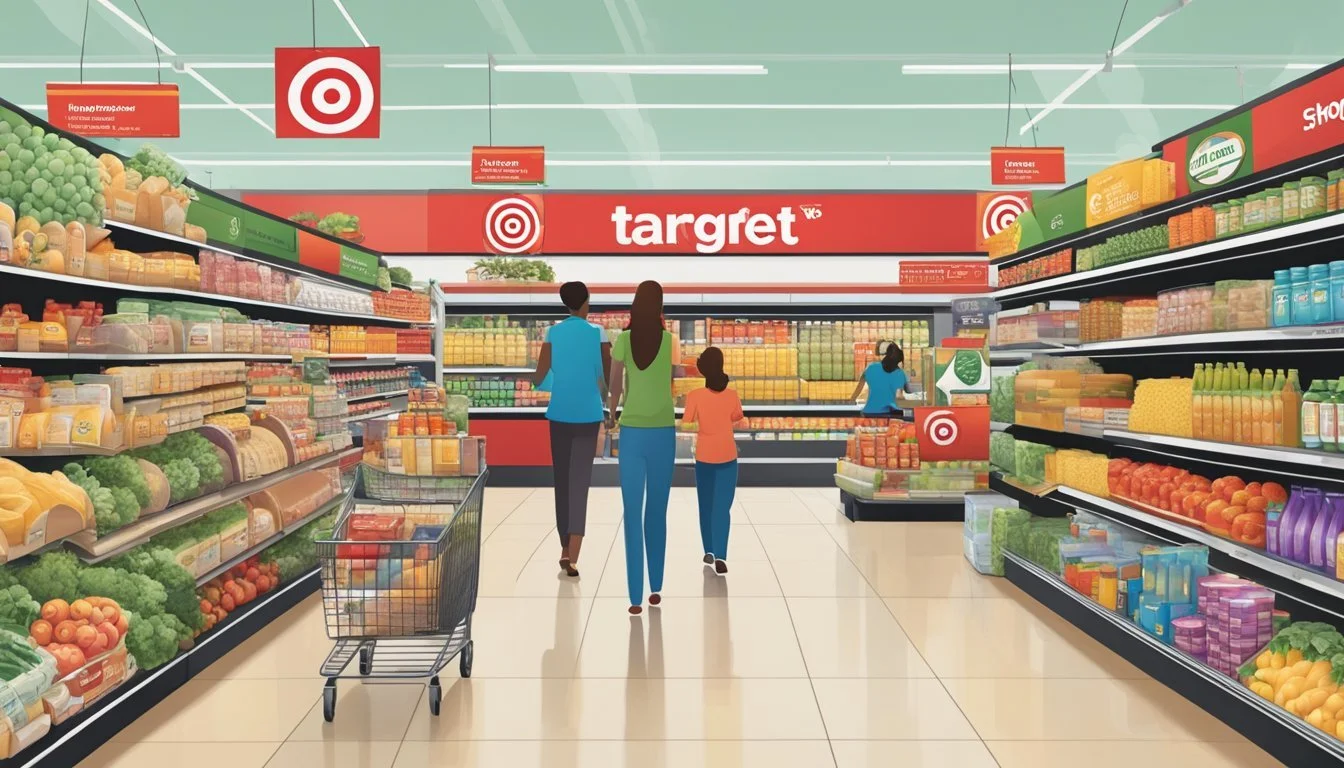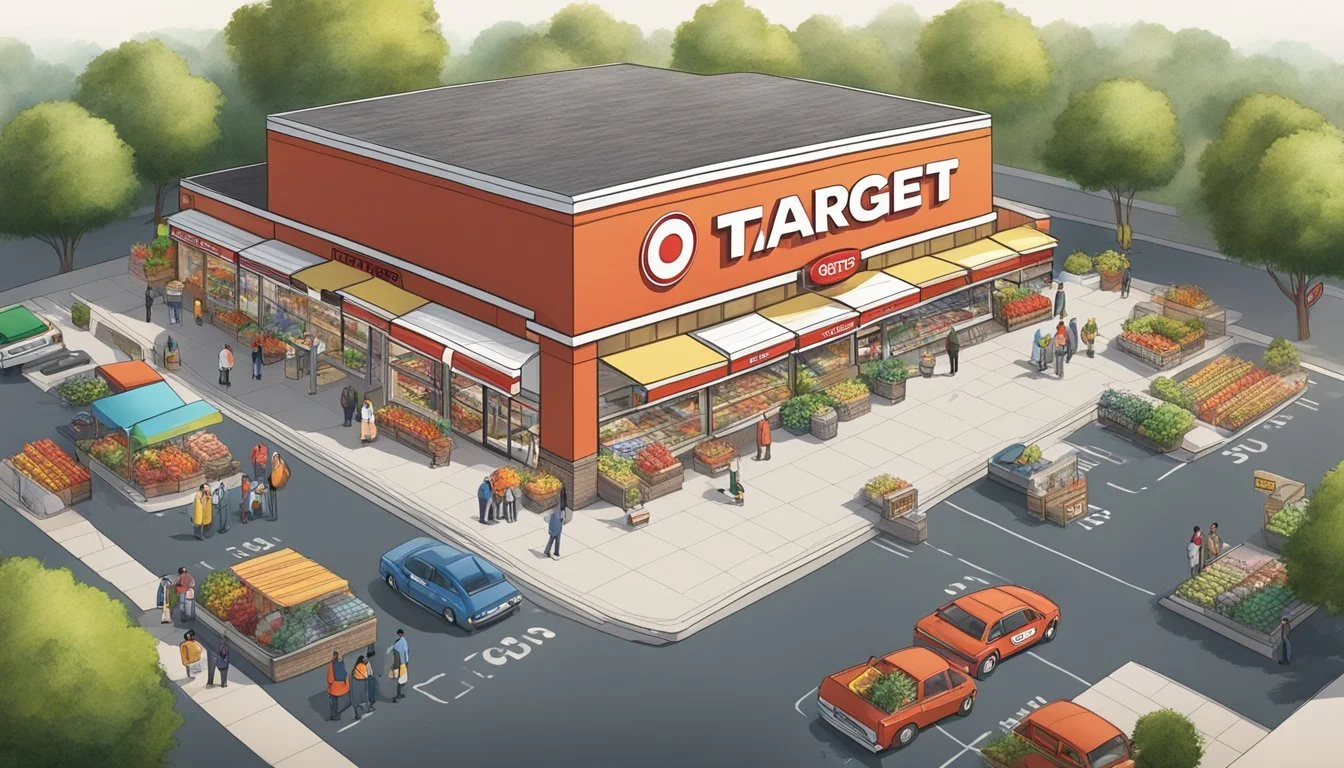Target vs Shoprite
A Comprehensive Comparison of Prices, Selection, and Service
When it comes to grocery shopping, choosing the right store can make a significant difference in your wallet and overall experience. Target and ShopRite are two popular options that cater to different consumer needs. Target offers a blend of general merchandise and groceries, appealing to shoppers who prefer one-stop shopping. ShopRite, on the other hand, focuses primarily on groceries and often provides a wider selection of food items.
While Target's prices are generally competitive, ShopRite tends to offer lower prices on groceries, potentially saving shoppers more money over time. This price difference is particularly noticeable on store-brand items and weekly specials. However, Target may have an edge in terms of store ambiance and the convenience of purchasing non-grocery items alongside food products.
Both supermarkets strive to meet consumer demands, but their approaches differ. Target emphasizes a streamlined shopping experience with modern store layouts, while ShopRite often provides a more traditional supermarket environment with a focus on variety and value. The choice between these two stores ultimately depends on individual preferences, shopping habits, and priorities.
Company Backgrounds
Target and ShopRite represent two distinct approaches to retail in the United States. Both have long histories of serving customers, but with different focuses and ownership structures.
Target Corporation History
Target Corporation began as Goodfellow Dry Goods in 1902 in Minneapolis, Minnesota. The company rebranded as Target in 1962, launching its first discount store. Target quickly expanded across the country, becoming known for its stylish yet affordable merchandise.
By 1975, Target had become the largest division of its parent company. In 2000, the corporation changed its name to Target Corporation. Today, Target operates over 1,800 stores across the United States. The company has carved out a niche as an "upscale discounter," offering trendy products at competitive prices.
Target's annual sales exceed $100 billion, making it one of the largest retailers in the U.S. The company is publicly traded on the New York Stock Exchange.
ShopRite Stores Overview
ShopRite operates under a different model than Target. It is a cooperative of independently owned and operated supermarkets. The ShopRite brand is owned by Wakefern Food Corporation, founded in 1946 by a group of independent grocers in New Jersey.
ShopRite stores are primarily located in the northeastern United States. The cooperative structure allows individual store owners to tailor their offerings to local communities while benefiting from collective purchasing power.
Wakefern Food Corp serves as the merchandising and distribution arm for ShopRite stores. This unique structure has helped ShopRite compete effectively against larger chains. ShopRite is known for its competitive pricing and strong private label offerings.
Store Locations and Accessibility
Target and ShopRite have distinct geographical footprints, influencing their accessibility for shoppers across the United States. Each chain's store locations reflect their different growth strategies and target markets.
Target's Nationwide Reach
Target operates over 1,800 stores across all 50 U.S. states and the District of Columbia. This extensive network provides widespread access for consumers nationwide. Major metropolitan areas often have multiple Target locations, including supercenters and smaller-format urban stores.
Target's expansion strategy focuses on both suburban and urban markets. The retailer has been increasing its presence in city centers with compact stores tailored to local needs. These smaller formats allow Target to penetrate dense urban areas where large supercenters aren't feasible.
ShopRite's East Coast Presence
ShopRite maintains a strong regional presence, primarily concentrated in the northeastern United States. The chain operates approximately 300 stores across six states: New Jersey, New York, Connecticut, Delaware, Pennsylvania, and Maryland.
New Jersey and New York host the majority of ShopRite locations. This focused approach allows ShopRite to cater specifically to East Coast consumers' preferences and shopping habits. The retailer's stores are often found in suburban areas and smaller cities throughout the region.
ShopRite's more limited geographical reach means it may not be accessible to shoppers outside the Northeast. However, within its core market, ShopRite stores are typically well-distributed and convenient for local residents.
Product Range and Quality
Target and ShopRite offer distinct product ranges and quality standards to cater to different customer needs. Both stores prioritize variety and freshness, but their approaches differ in key areas.
Target's Product Categories
Target boasts a wide array of product categories, extending beyond groceries. The store's grocery section features a mix of national brands and Target's own private labels like Good & Gather and Market Pantry. Target offers a curated selection of organic and natural foods, appealing to health-conscious shoppers.
The store's product range includes:
Pantry staples
Frozen foods
Dairy products
Snacks and beverages
Limited fresh produce
Target's focus on design-forward home goods and clothing often overshadows its grocery offerings. However, the quality of Target's food products generally meets customer expectations, with private labels often matching or exceeding national brand standards.
ShopRite's Fresh Produce Emphasis
ShopRite places a strong emphasis on fresh produce and quality perishables. The store is known for its extensive selection of fruits and vegetables, often sourced from local farms when in season. ShopRite's commitment to freshness is evident in its produce departments, which are typically larger and more varied than those found at Target.
Key features of ShopRite's product range include:
In-house butcher counters
Fresh seafood sections
Bakery departments with freshly baked goods
Extensive deli offerings
ShopRite also carries a robust selection of organic produce, catering to customers seeking pesticide-free options. The store's focus on fresh, high-quality ingredients has earned it a reputation as a go-to destination for home cooks and food enthusiasts.
Pricing and Savings
Target and ShopRite both aim to offer competitive pricing and savings opportunities for shoppers. Their strategies differ in everyday pricing structures and promotional approaches.
Everyday Pricing Comparison
Target typically maintains slightly lower everyday prices compared to ShopRite. A basket of common grocery items at Target often costs 3-5% less than at ShopRite. Target's store brand, Good & Gather, offers particularly competitive pricing on staples like milk, bread, and eggs.
ShopRite counters with a wider selection of national brands at varying price points. This gives shoppers more options to choose from based on their budget and preferences.
Sales and Discounts Overview
ShopRite excels in weekly sales and promotions. Their circular features deep discounts on select items, often beating Target's prices on those specific products. ShopRite's loyalty program, Price Plus, provides additional savings through personalized offers.
Target runs fewer but longer-lasting sales. Their REDcard offers a consistent 5% discount on most purchases. Target Circle, their free loyalty program, provides 1% cashback and access to exclusive deals.
Both stores offer digital coupons through their apps. ShopRite tends to have a larger volume of manufacturer coupons available, while Target focuses more on store-specific offers.
Customer Shopping Experience
Target and ShopRite offer distinct shopping experiences that cater to different customer preferences. Both stores strive to provide convenience and efficiency, but they differ in their approaches to store layout, checkout processes, and overall ambiance.
Checkout and Payment Efficiency
Target emphasizes a streamlined checkout experience. The store offers self-checkout kiosks alongside traditional cashier lanes, reducing wait times during peak hours. Target's mobile app allows customers to scan items as they shop, further speeding up the process.
ShopRite focuses on personalized service at checkout. Many locations have dedicated express lanes for customers with fewer items. Some ShopRite stores have introduced self-checkout options, though not as extensively as Target.
Both retailers accept various payment methods, including cash, credit cards, and mobile payments. Target's REDcard provides additional savings and perks, while ShopRite offers digital coupons through its app.
In-Store Shopping Environment
Target stores typically feature wide aisles and clear signage, creating an open and inviting atmosphere. The retailer's signature red branding is prominent throughout the store. Target often incorporates trendy home decor and fashion displays, appealing to style-conscious shoppers.
ShopRite stores vary in layout and design, as they are independently owned and operated. Many locations focus on a practical, no-frills environment that prioritizes product selection over aesthetics. ShopRite stores often have dedicated sections for ethnic foods and local specialties.
Target's store layout encourages browsing, with carefully curated endcaps and seasonal displays. ShopRite's layout is generally more functional, designed for efficient grocery shopping with clearly organized departments.
Grocery Delivery and Digital Services
Target and ShopRite have embraced digital solutions to enhance customer convenience. Both retailers offer online shopping platforms and various delivery options to cater to evolving consumer preferences.
Online Shopping Platforms
Target's user-friendly website and mobile app provide a seamless digital shopping experience. Customers can browse products, access digital coupons, and manage their loyalty program rewards easily. ShopRite's online platform offers similar functionality, allowing shoppers to view weekly circulars and create shopping lists.
Target integrates its loyalty program, Target Circle, directly into its digital ecosystem. This integration enables customers to earn and redeem rewards effortlessly. ShopRite's Price Plus card program also syncs with its online platform, providing personalized deals and discounts.
Delivery Options and Services
Target partners with Shipt for same-day grocery delivery, offering free delivery for orders over $35 with a Shipt membership. Non-members can access the service for a per-order fee. Target also provides Drive Up service, allowing customers to place orders online and have them brought to their cars.
ShopRite offers home delivery through its own service and third-party platforms like Instacart. Delivery fees vary based on order size and membership status. ShopRite's Shop from Home service lets customers order online and pick up in-store or curbside.
Both retailers have expanded their delivery options to compete with Amazon Prime and Walmart's grocery services. Target and ShopRite prioritize convenience, aiming to provide flexible solutions for busy shoppers.
Loyalty and Reward Programs
Target and Shoprite both offer loyalty programs to incentivize customer retention and provide savings. These programs differ in structure and benefits, catering to their respective customer bases.
Target's Loyalty Strategy
Target Circle is Target's free loyalty program. Members earn 1% cashback on purchases and receive personalized deals. The program offers birthday rewards and community support through charitable donations.
Target Circle 360 provides additional perks for $10.99 per month. Subscribers enjoy unlimited same-day delivery on orders over $35, a key differentiator from the free tier.
Target's loyalty strategy focuses on digital integration. The Target app centralizes rewards, coupons, and shopping lists. This approach appeals to tech-savvy consumers seeking convenience.
Shoprite's Customer Rewards
Shoprite's Price Plus card is the cornerstone of its loyalty program. Cardholders access weekly specials and digital coupons. The program emphasizes immediate savings at checkout rather than points accumulation.
Shoprite's digital app enhances the loyalty experience. It allows customers to clip digital coupons, create shopping lists, and track spending. The app also provides personalized offers based on shopping history.
Shoprite frequently runs promotions where Price Plus members can earn free products or additional discounts. These promotions often require purchasing specific items or reaching spending thresholds.
Unique Features and Services
Target and ShopRite offer distinct features that set them apart in the competitive grocery market. Both chains have developed specialized offerings to cater to their customers' needs and preferences.
Exclusive Brands and Product Lines
Target's exclusive brands like Good & Gather and Market Pantry provide high-quality groceries at affordable prices. These private labels cover a wide range of products from pantry staples to fresh produce and prepared meals.
ShopRite counters with its Bowl & Basket and Paperbird lines. These store brands emphasize value without compromising on quality. ShopRite's exclusive products span various categories, including organic and natural options.
Both retailers focus on expanding their store brand portfolios to offer alternatives to national brands. This strategy allows them to control quality while providing competitive pricing for budget-conscious shoppers.
Catering and Prepared Food Offerings
Target has expanded its food service options in recent years. Many locations now feature Starbucks cafes and grab-and-go sections with sandwiches, salads, and snacks. Some larger stores include expanded deli counters with hot food items.
ShopRite excels in its prepared food and catering services. Many stores boast extensive hot food bars, sushi stations, and in-store bakeries. ShopRite's catering menus offer a variety of options for events and gatherings, from party platters to full-service meal solutions.
The availability of ready-to-eat meals and catering services adds convenience for busy customers. These offerings have become increasingly important as consumers seek time-saving solutions for meals and entertaining.
Community and Environmental Impact
Target and ShopRite both recognize the importance of sustainability and community engagement. Their efforts in these areas can significantly influence customer loyalty and brand perception.
Sustainability Practices
Target has set ambitious sustainability goals, aiming to design 100% of its owned brand products for circularity by 2040. The company focuses on reducing waste and increasing the use of recycled materials in packaging. Target also invests in renewable energy, with plans to source 100% of its electricity from renewable sources by 2030.
ShopRite implements various eco-friendly initiatives across its stores. The company has introduced reusable bags and encourages customers to bring their own. ShopRite also partners with local farms to reduce transportation emissions and support regional agriculture.
Both retailers have made strides in reducing food waste. Target donates unsold food to local food banks, while ShopRite participates in composting programs in select locations.
Community Engagement Efforts
Target's community engagement centers around its Target Circle program. This initiative allows customers to direct the company's charitable giving to local nonprofits. The retailer also supports education through school supply drives and literacy programs.
ShopRite is known for its strong ties to local communities. The company regularly hosts food drives and supports local food banks through its ShopRite Partners in Caring program. This initiative has donated millions of dollars to hunger relief organizations.
Both retailers offer volunteer opportunities for employees to engage with local causes. Target provides paid time off for volunteering, while ShopRite encourages team members to participate in community events.


